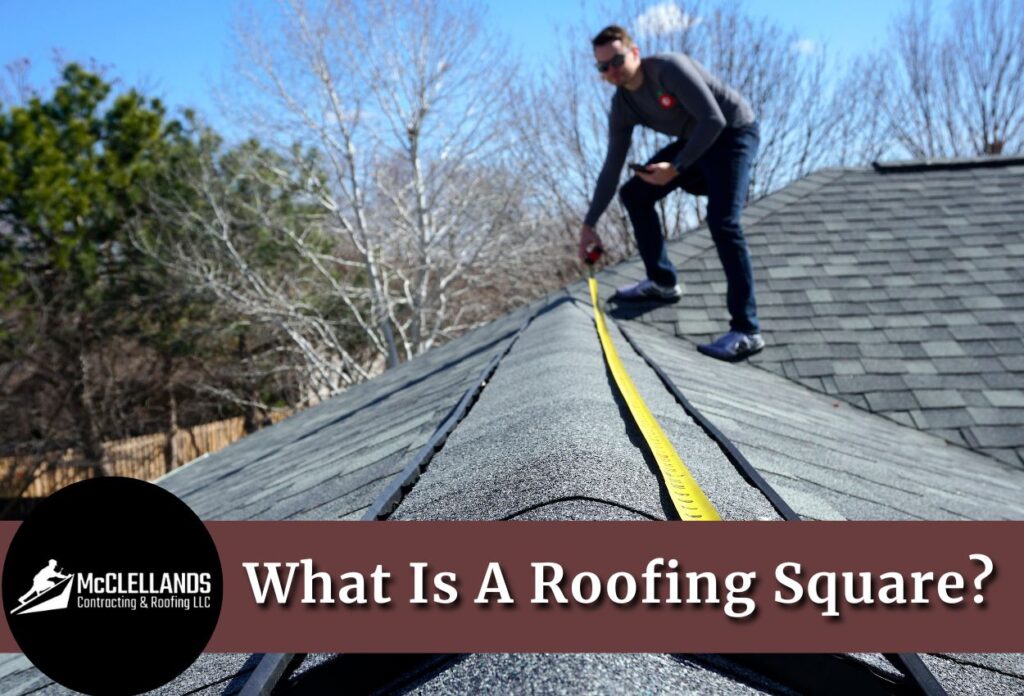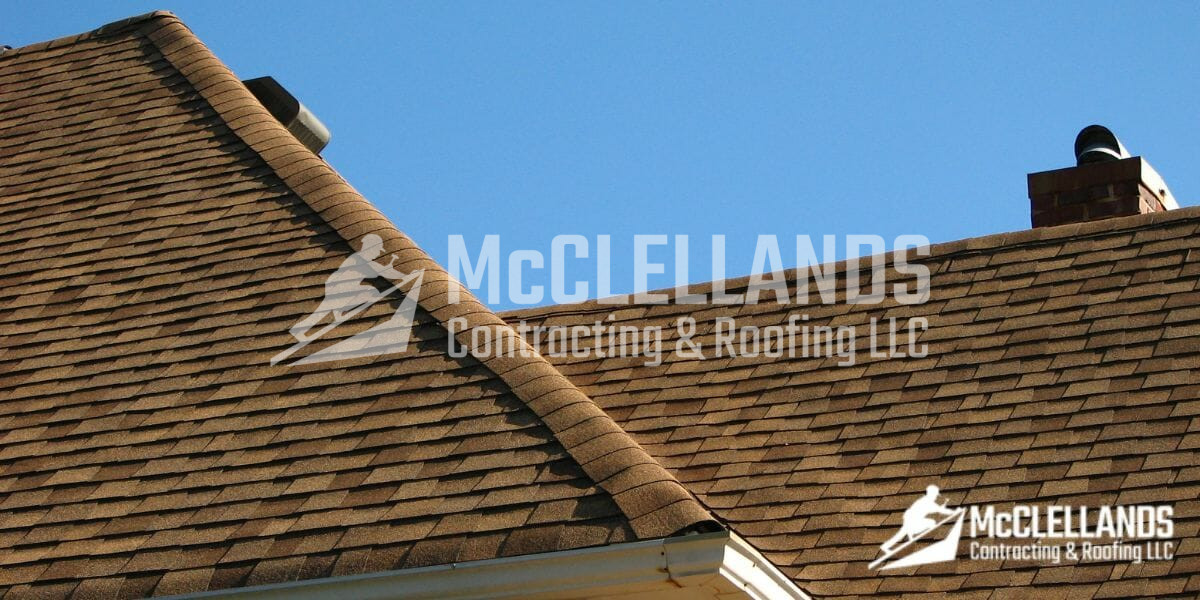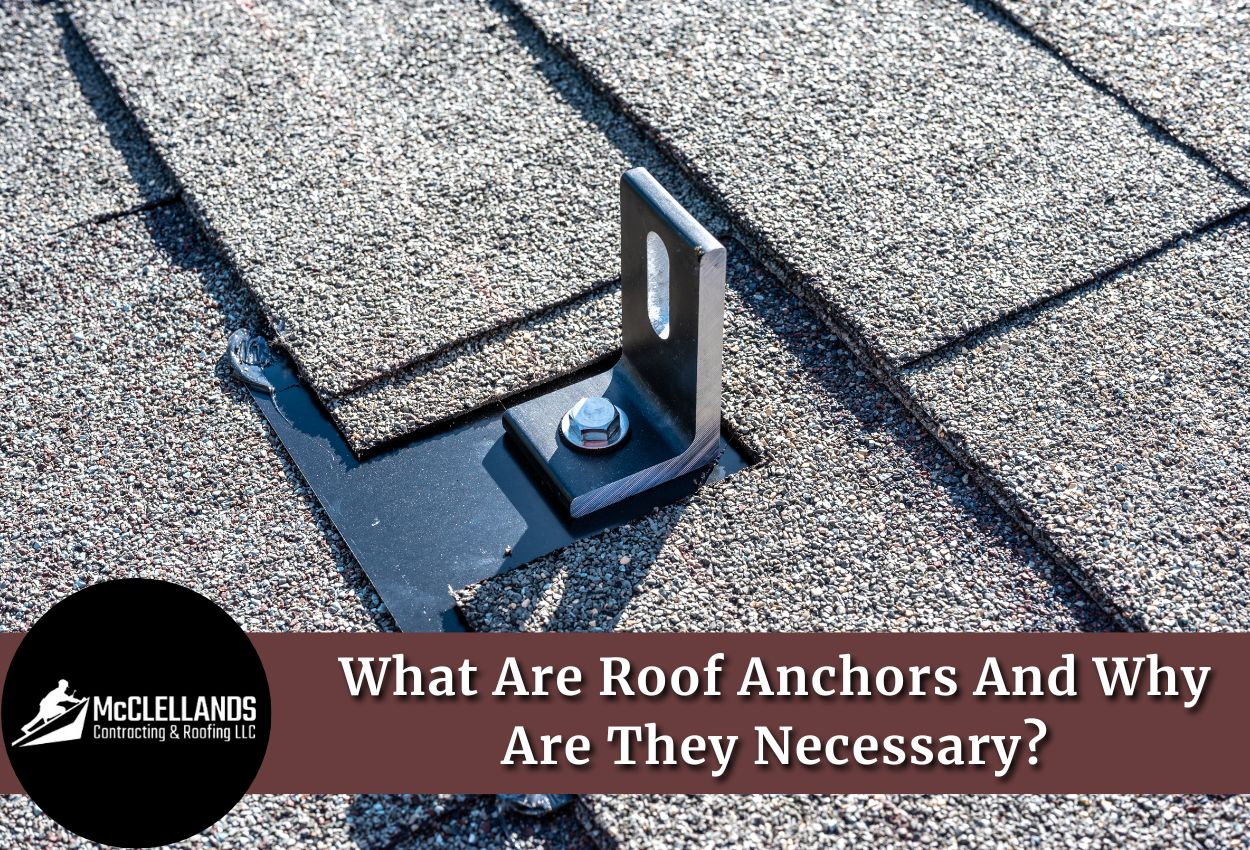
Here is a term you will probably hear from your roofer: roofing square. Roofers generally work in terms of roofing squares. Knowing what it is and how to calculate it is important for you to understand as a homeowner.
At McClellands Contracting and Roofing, LLC, we are your local roofing company in Pittsburgh. In today’s article, we will go over everything you should know about roofing squares.
What Is A Roofing Square?
A roofing square is a unit of measurement that roofing professionals use to calculate materials and costs for projects.
A roofing square is equal to 100 square feet of roof area (10-by-10 feet). For example, if your roof is 2,000 square feet, then it would be 20 squares.
This measurement helps roofers determine how much material they need to order, including shingles, underlayment, and other roofing materials. When contractors talk about your roof size in squares, they’re simply dividing the total square footage by 100.
This industry standard makes it easier for everyone involved in your roofing project to understand the scope of work.
How To Calculate How Many Roofing Squares Your Roof Has
Here we will share how to calculate how many roofing squares your roof is. Knowing this can help you communicate with your roofer during your project.
Step 1: Measure Your Home
First, you need to find out the basic size of your home. The easiest way to do this is by measuring the length and width of your house. Walk around your home and count your steps. An average person’s stride is about 3 feet, so you can use this to get a rough measurement.
For example:
👉🏻 If you take 20 steps along the length of your home and each step is about 3 feet, your home’s length would be about 60 feet.
👉🏻 If you take 15 steps along the width and each step is about 3 feet, your home’s width would be about 45 feet.
Multiply these numbers to get a rough idea of your home’s size: 60 feet × 45 feet = 2,700 square feet
This is just an estimate of your home’s measurements, but it’s the first step in calculating your roof’s square footage.
Step 2: Consider Your Roof’s Pitch and Complexity
Your roof’s pitch (steepness) and complexity are important factors that affect the total square footage. A steeper roof has more surface area than a flat roof, even if the measurements are the same.
Here’s a simple guide to help you determine what multiplier to use:
👉🏻 For a roof with minimal pitch: multiply your footprint by 1.3
👉🏻 For a roof with some complexity and a medium pitch (5/12 to 8/12): multiply by 1.4
👉🏻 For a complex and steep roof (8/12 or steeper): multiply by 1.6
For example, if your home has a moderately pitched roof, you would use the 1.4 multiplier: 2,700 square feet × 1.4 = 3,780 square feet of roof area
Step 3: Calculate Your Roof’s Square Footage
Using the example above, your calculation would look like:
👉🏻 Home measurements: 60 feet × 45 feet = 2,700 square feet
👉🏻 Applying the pitch and complexity multiplier: 2,700 × 1.4 = 3,780 square feet
This gives you the total square footage of your roof surface area.
Step 4: Convert Square Footage to Roofing Squares
The final step is to convert your roof’s total square footage into roofing squares. Simply divide the total square footage by 100:
3,780 square feet ÷ 100 = 37.8 roofing squares
Since materials are typically purchased in whole squares, your roofer would round up to 38 squares to make sure they have enough to complete your roof.
Step 5: Account for Waste
It’s important to know that roofers will add an extra percentage for waste. Depending on your roof’s complexity and the type of shingles, the waste factor can range from 10% to 15%. This accounts for cuts around vents, chimneys, and other features.
For our example, if we add a 10% waste factor:
38 squares × 0.10 = 3.8
3.8 + 38 = 41.8, rounded up to 42 squares
This is the amount of material your roofer would likely order for your project.
Why You Can’t Use Your Home’s Square Footage
Many homeowners think they can just use their home’s interior square footage to calculate roof squares, but this is not accurate for several reasons:
👉🏻 Roof Pitch: A steeper roof has more surface area than a flat one, even if they have the same measurements.
👉🏻 Roof Complexity: Features like dormers, multiple faces, hips, and valleys all add to your roof’s surface area.
👉🏻 Overhangs: Your roof likely extends beyond your home’s exterior walls, creating additional roof area.
👉🏻 Multiple Stories: If you have a two-story home with 2,000 square feet of living space, your roof might only cover 1,000 square feet (the top floor).
👉🏻 Unfinished Spaces: Areas like attics and garages might not be counted in your home’s living space, but are still covered by your roof.
Understanding Shingle Bundles
When purchasing materials, it’s helpful to know that shingles generally come in bundles. Most standard asphalt shingles require about three bundles per square. So if your roof is 38 squares, you would need approximately:
38 squares × 3 bundles = 114 bundles of shingles
However, some premium or heavier shingles might require 4 to 6 bundles per square. Your roofing contractor will know exactly how many bundles to order based on the type of shingles you choose.
Factors That Affect Roofing Costs
While the number of squares is a major factor in determining the cost of your new roof, other factors also play a role:
👉🏻 Type of roofing material (asphalt, metal, tile, etc.)
👉🏻 Quality of materials
👉🏻 Roof accessibility
👉🏻 Removal of old roofing material
👉🏻 Labor costs in your area
👉🏻 Time of year
👉🏻 Warranty options
Understanding these factors helps you better interpret your roofing estimate and make informed decisions about your project.
Get A Free Roof Estimate In Pennsylvania
By understanding what a roofing square is and how to calculate it, you can have more meaningful conversations with your roofing contractor and better understand your estimate. This knowledge helps you make sure you’re getting a fair price and the right amount of materials for your roof replacement project.
At McClellands Contracting and Roofing, LLC, we are committed to providing high-quality roofing services in Pittsburgh and the surrounding areas of Pennsylvania. We offer free, no-obligation estimates for roofing projects and will take time to explain the details and answer your questions.
For a free inspection or discussion with our roofers, call us today at (412) 353-5660.




